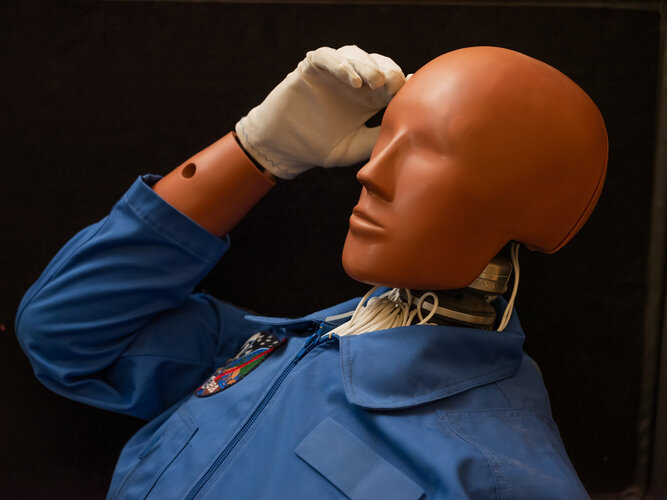Crash test dummies are used for testing spacecraft, not just cars. This example is a veteran of an ambitious past project to develop a small spaceplane.
The X-38 Crew Return Vehicle was a joint ESA-NASA plan to create a small lifting body glider, like a mini Space Shuttle, that could bring astronauts home from the International Space Station in an emergency. A series of flight tests ended in 2001 when an X-38 was dropped from a NASA B-52 aircraft at 13 715 m.
The project did not proceed further however and what is formally known as an ‘anthropomorphic test dummy’ never got a chance to fly. Instead ESA applied its experience from the X-38 programme to develop its own lifting-body glider programme. The uncrewed Intermediate Experimental Vehicle IXV proved the concept in 2015, when it was launched atop a Vega launcher then recovered after controlled flight to a Pacific Ocean splashdown.
ESA’s IXV experience in turn has been applied to the reusable Space Rider spaceplane, set to make its first launch next year.
The ATD is part of the first selection of items on the 99 Objects of ESA ESTEC website, a set of intriguing, often surprising artefacts helping tell the story of more than half a century of activity at ESA’s technical heart.



 Image:
Crash test dummy
Image:
Crash test dummy